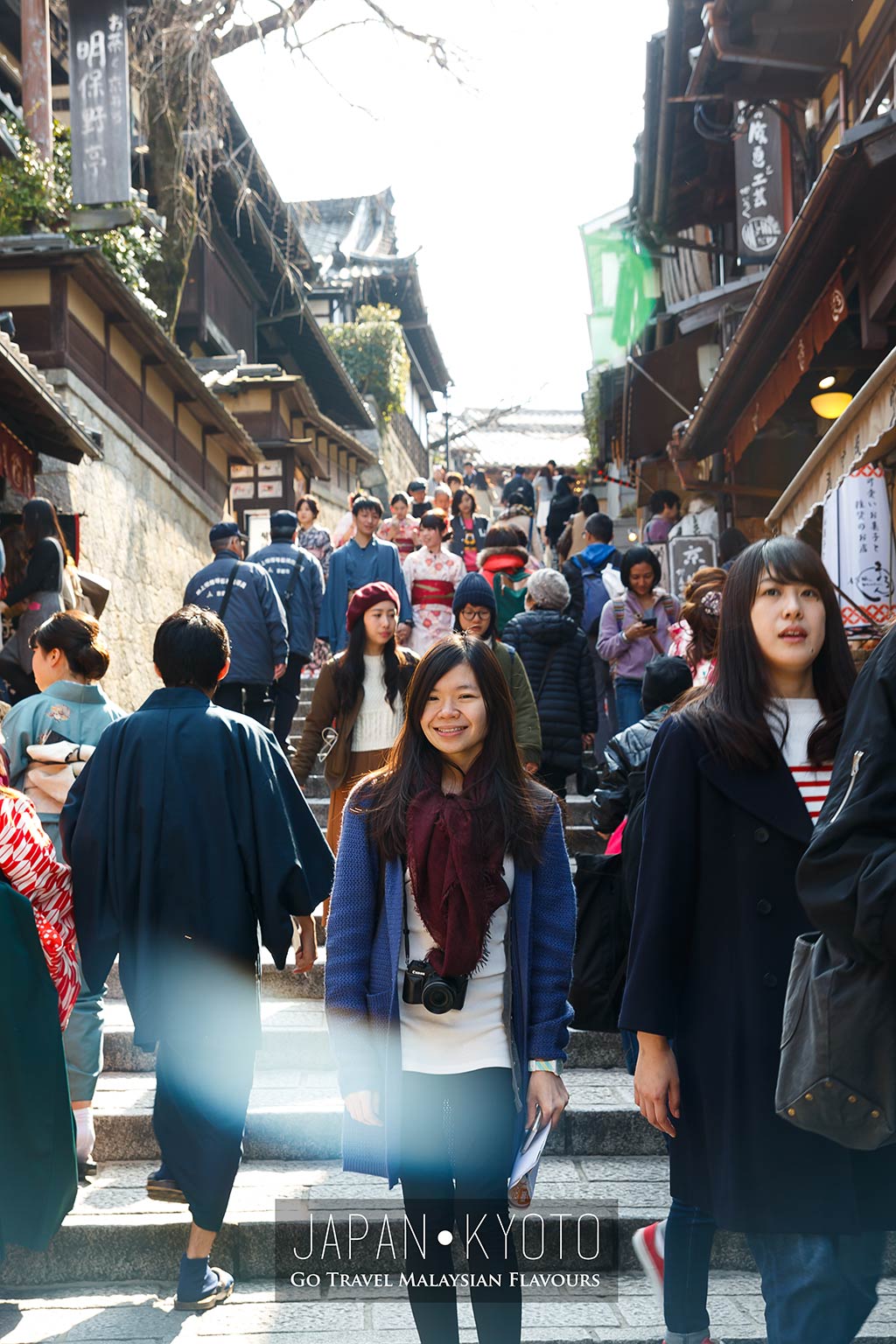
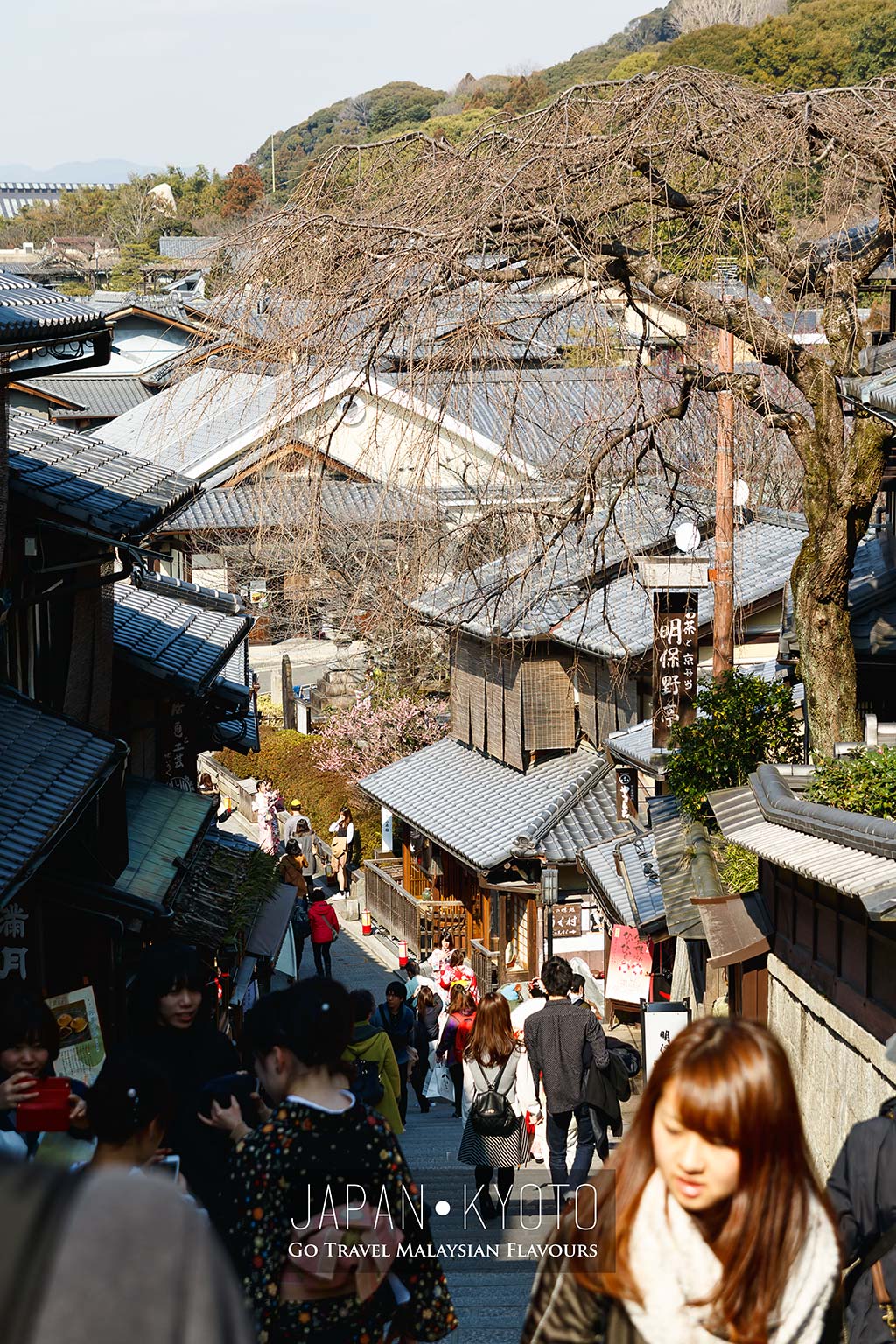
After paying visit to % Arabica, Hokan-ji Temple and a slow walk in Yakasa Dori, we walked through 二年坂 Ninen-zaka and 三年坂 Sannen-zaka, the two most celebrated streets in Kyoto city. They are pedestrian lanes paved with greyish flagstones, with steep and narrow staircases at Sannenzaka, leading to Kiyomizu-dera temple.
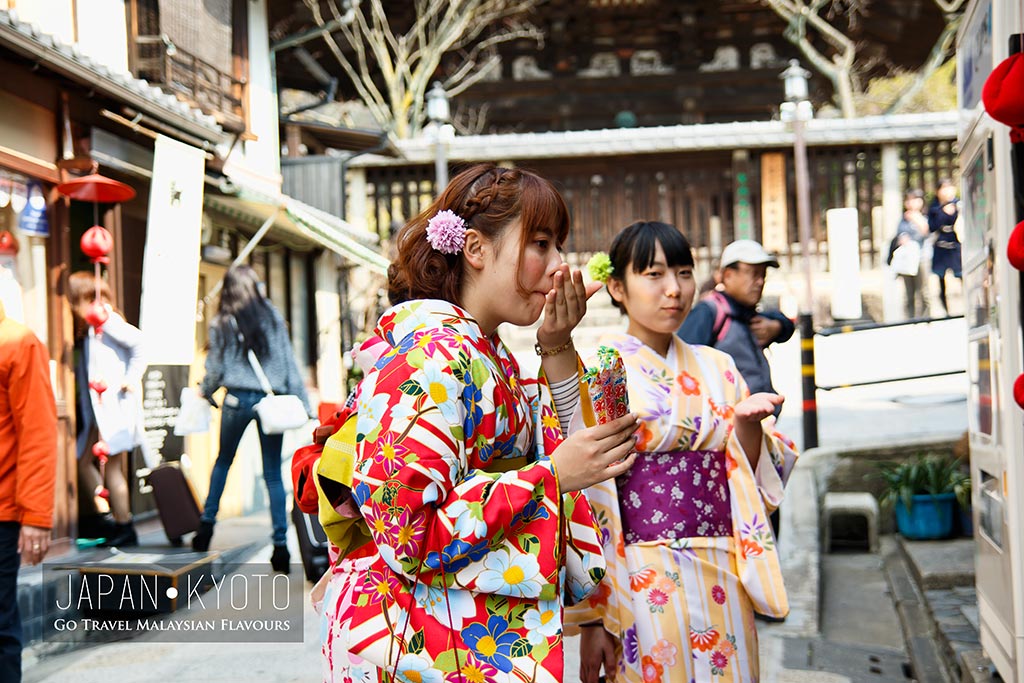
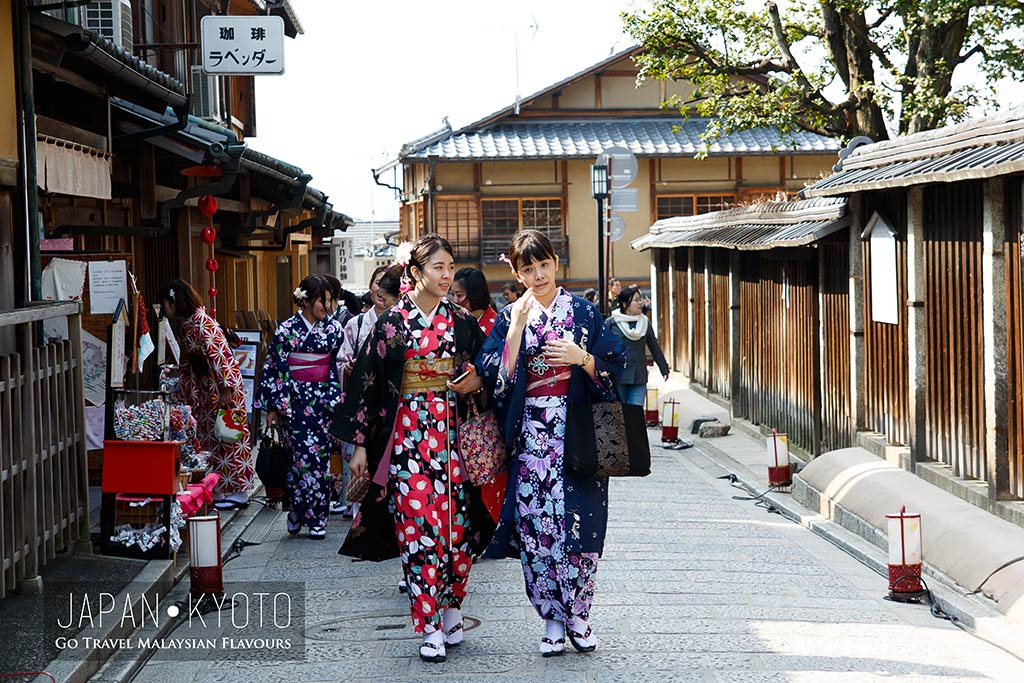
Along the streets are traditional Japanese wooden buildings, made us felt we were walking in the old Kyoto city. The noteworthy part: Clean streets, restored and well-maintained neighbourhood buildings despite the crowd, tourist-oriented scene.
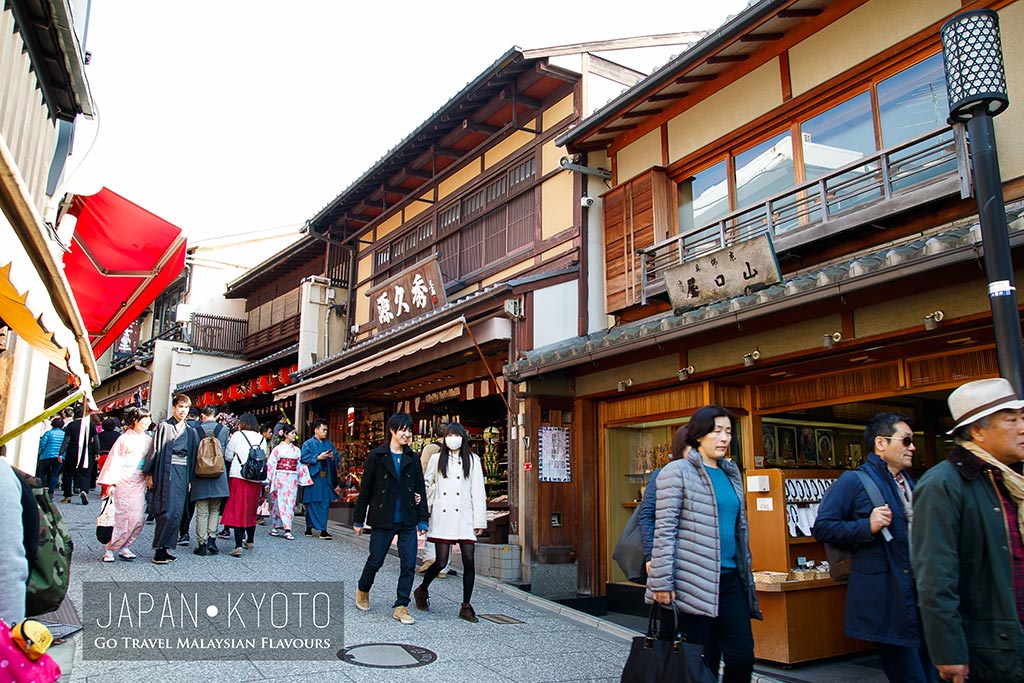
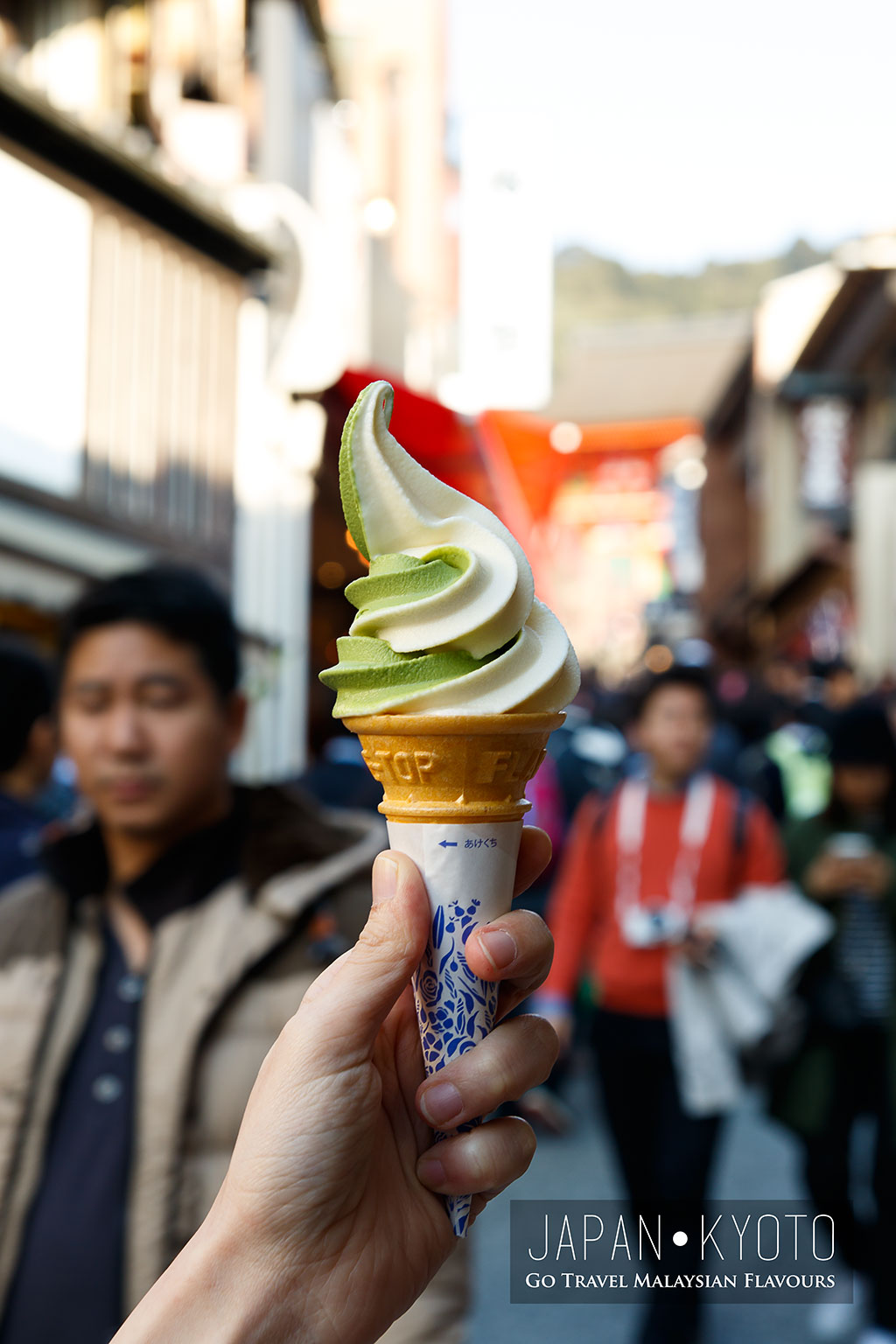
Matcha ice cream is a must in Kyoto! Bought randomly from a crowded ice cream dessert shop but tasted just OK.
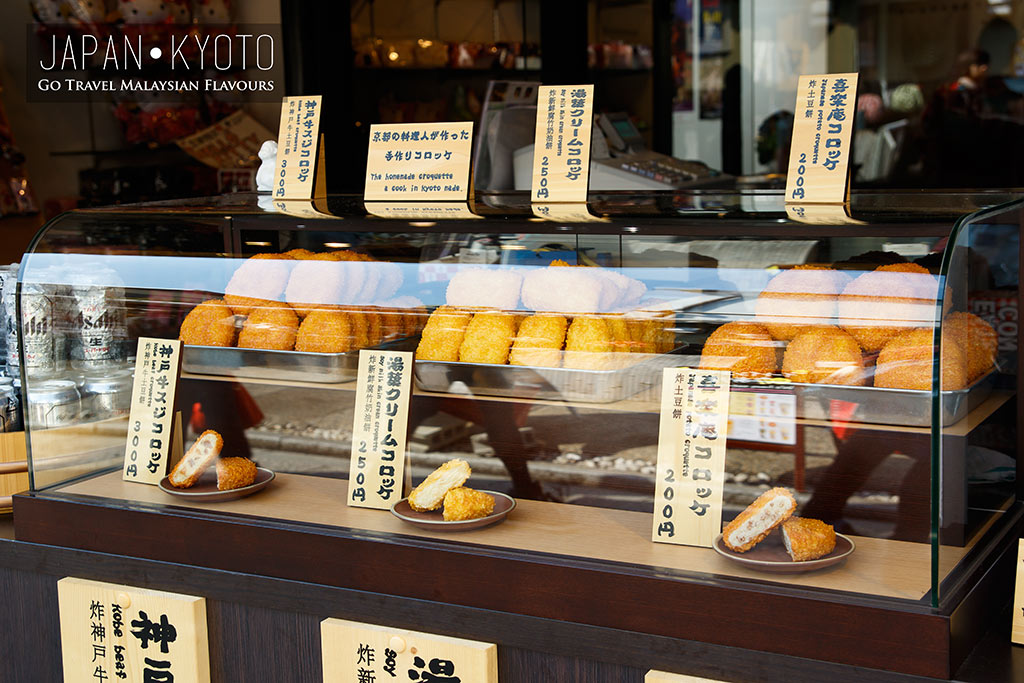
Ninenzaka and Sannenzaka are filled with plenty of restaurants, souvenir shops, ice-cream kiosk, tea house, etc.. Great for shopping and food. Everything there seemed so interesting and beautifully packaged! Sweets, mochi, marshmallows, pots & plates, porcelain wares, chopsticks, handkerchief, baum cake, green tea ice cream, cream puff, tea leaves, Japanese pickles/ Tsukemono, bla bla bla bla bla…If time allowed, we would spend half day stepping into each shop.
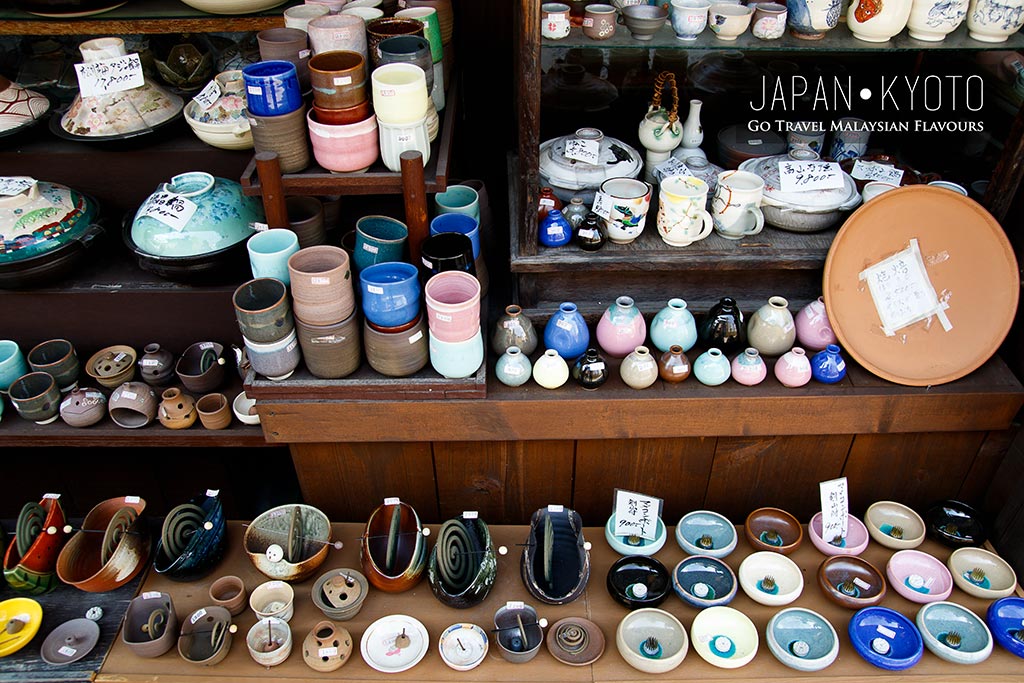
Most shops opened around 10AM and closed by 6PM, unless there are special celebrations. Just window shopping and buy nothing? Impossible. LOL. We bought a cute spoon too and regret not buying few more Japanese plates. T_T
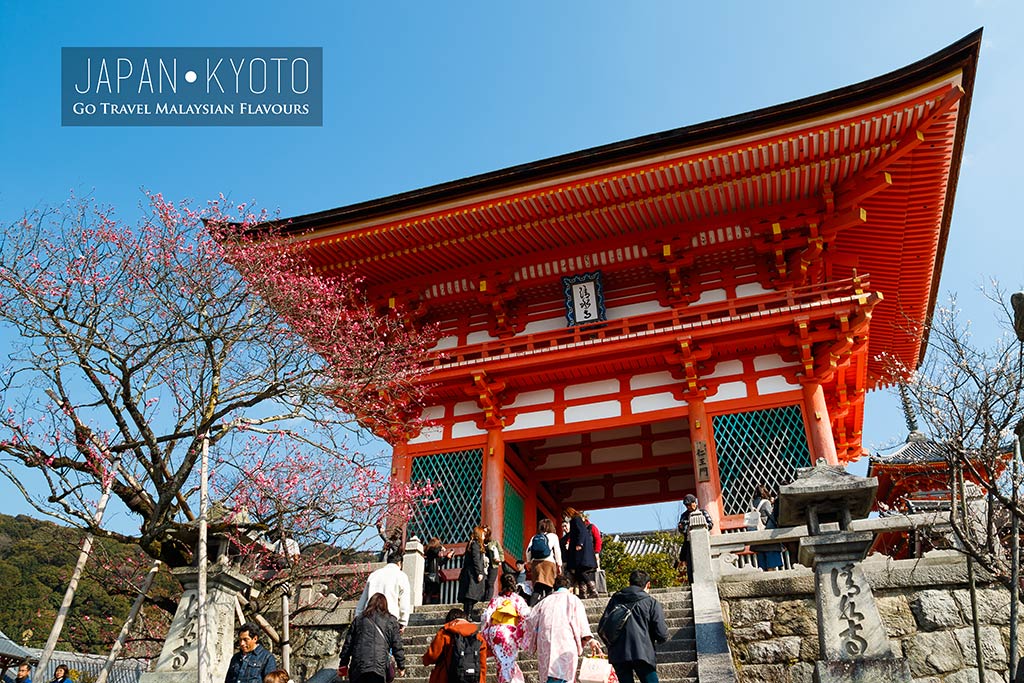
Nio-mon 仁王門
Strolled along Matsubara Dori 松原通 and at the end of the street, Nio-mon 仁王門, the main entrance of Kiyomizu-dera Temple came in sight. But super crowded. So excited to finally see this 4 meters high, 10 meters wide gate, painted in beautiful, bright orange-red!
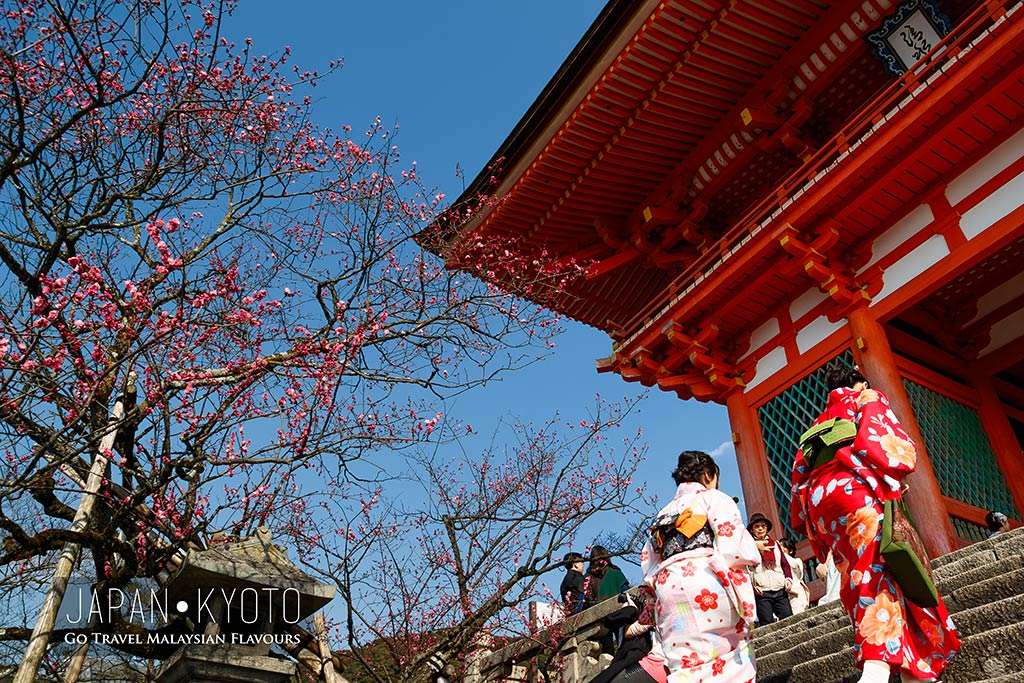
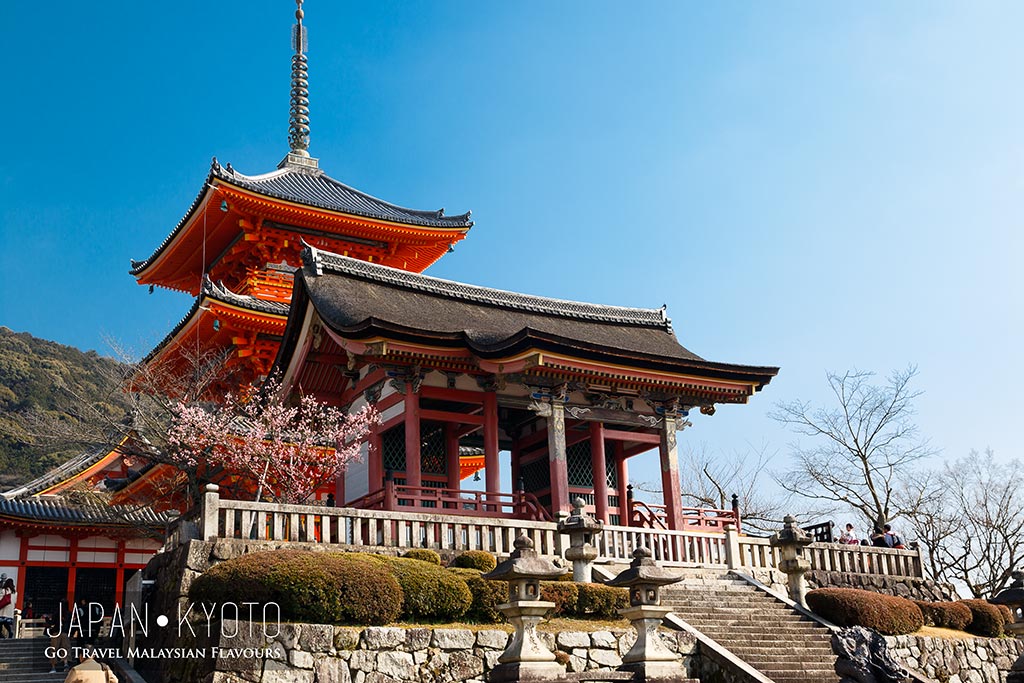
西門 Sai-mon (West Gate)
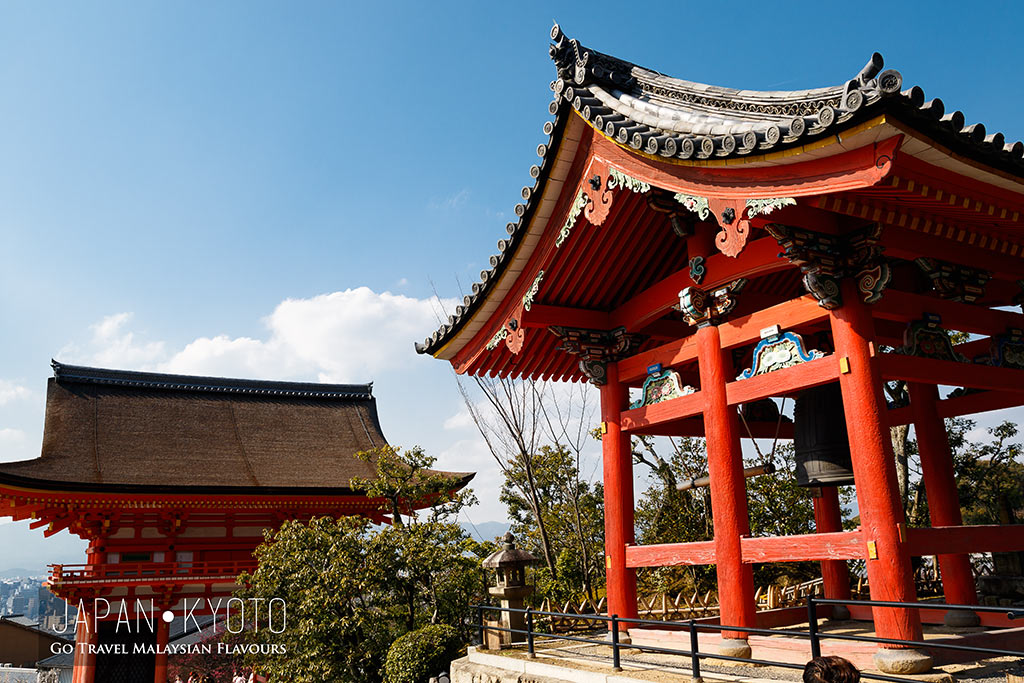
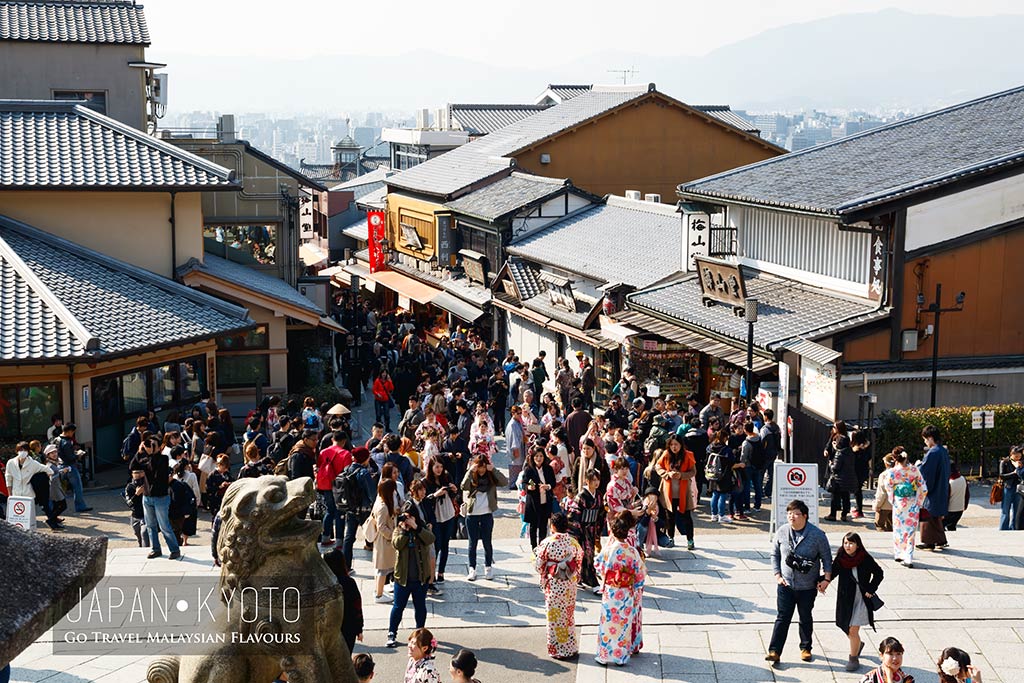
Walked up the staircases and be ready to enjoy the magnificient view of traditional olden streets from near, blending the past and presents with buildings of Kyoto City from far.
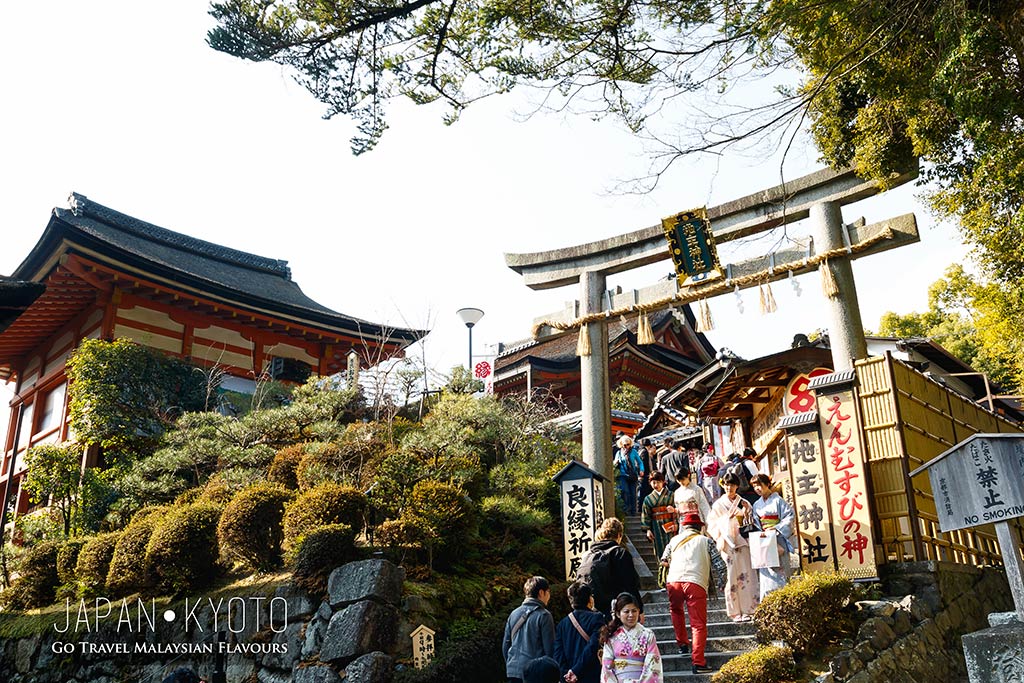
Jishu Shrine 地主神社
Jishu Shrine, some call it as The Love Temple, because you can pray for your love and relationship here. Remember to look for the “love-fortune-telling” stone. It is said that if you walked safely from the love stone to other with your eyes closed, your love wish will be granted soon. It no, it will be long before your love is realized. But, with so many visitors passing through, we probably will bump into someone else before reaching the second stone. LOL.
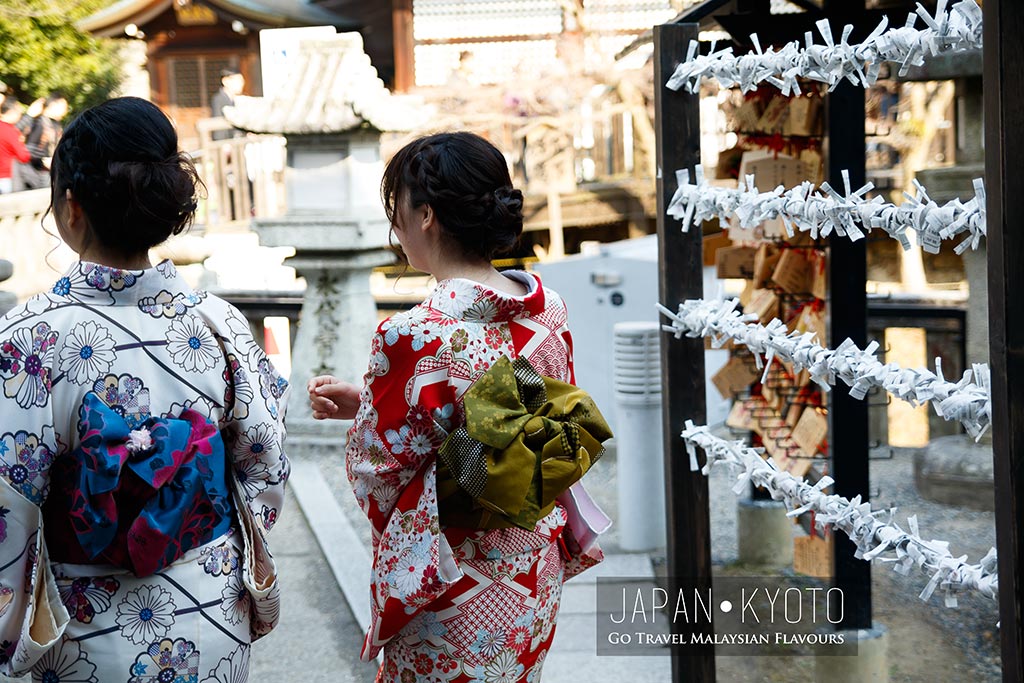
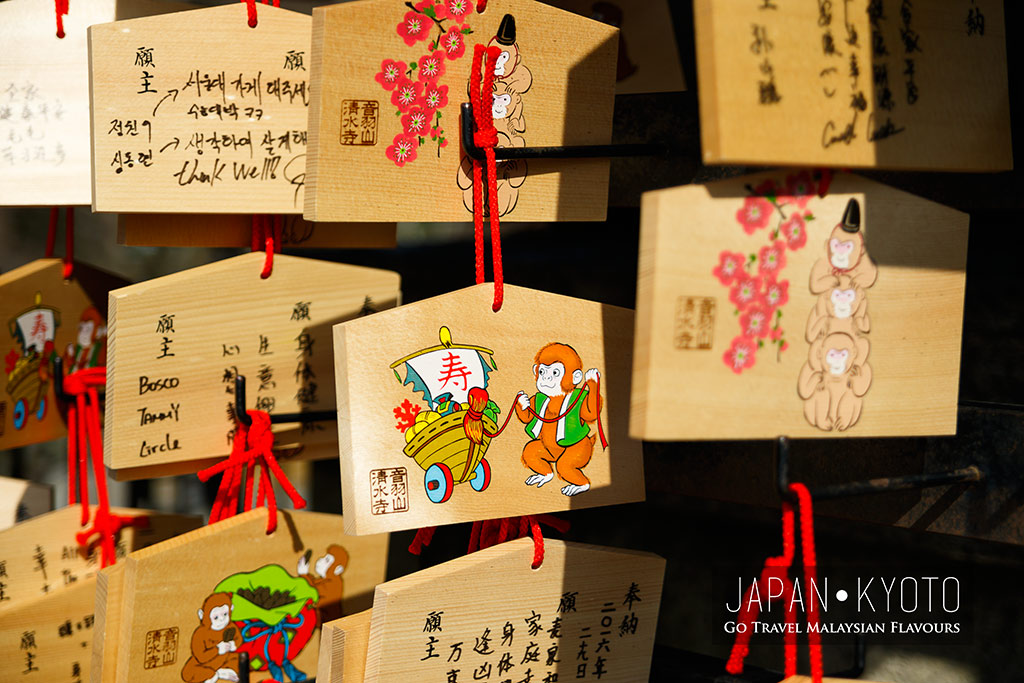
Write your love note on the Love Plate, get blessed and live-happily-ever-after with your loved one.
Main Hall (Hondo) 清水寺本堂
Kiyomizu-dera Temple opening hours is 6AM to 6PM. Reach early if you wanted to avoid crowds. Admission is free for the ground surroundings but entrance fee of 300 yen will be charged if you wish to get the best view of Kiyomizu Stage.
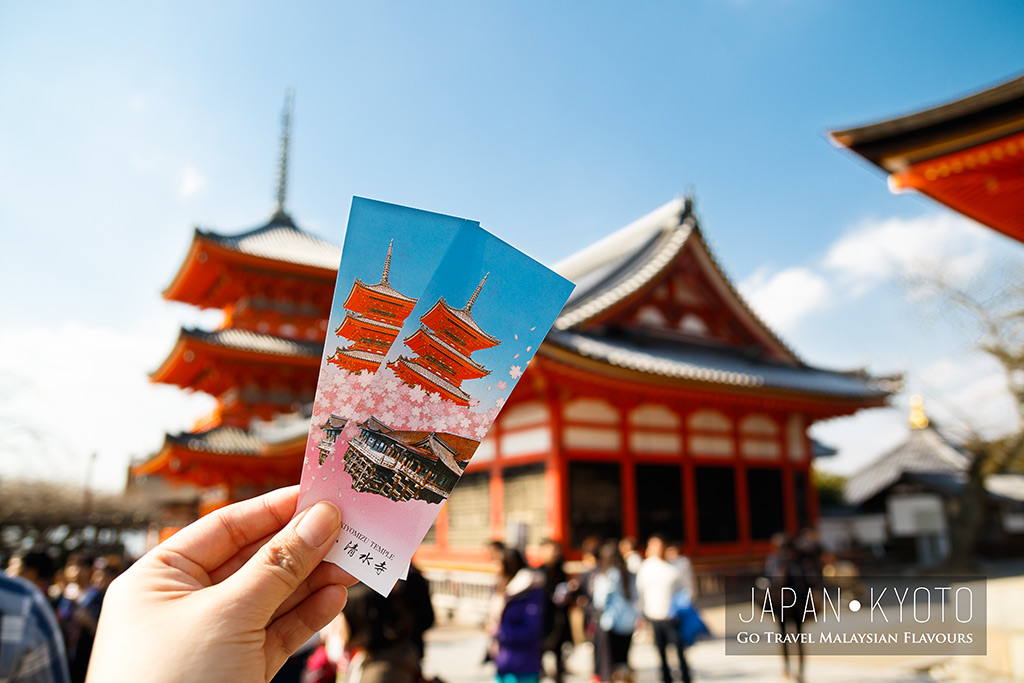
And yeah, we paid.
Due to its strategic location surrounded by mountains’ nature, the landscape of Kiyomizu-dera temple offers a stunning view in different seasons. Plum blossom in end of winter, Sakura cherry blossoms in Spring, lush greenery in Summer, maple leaves in Autumn and dreamy white snowcapes in Winter.
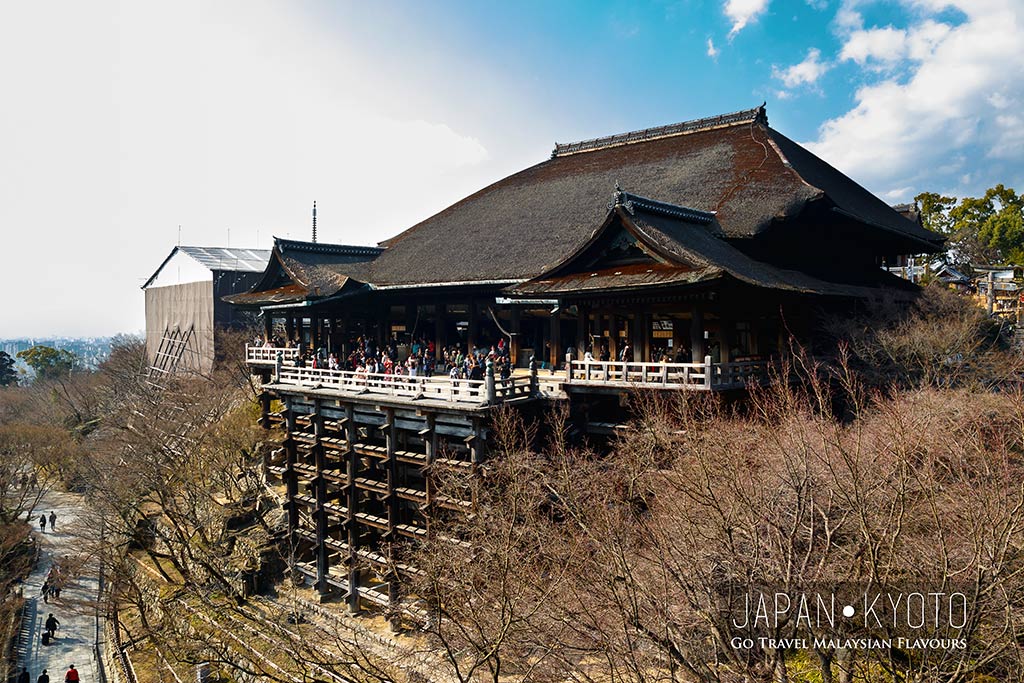
Kiyomizu Stage 清水寺舞台
Kiyomizu Stage, the most iconic structure in Kiyomizudera Temple. It is an extended stage hangs over the front of the Main Hall, about 190 square metres in size, supported by over 13 meters high pillars from its foundation.
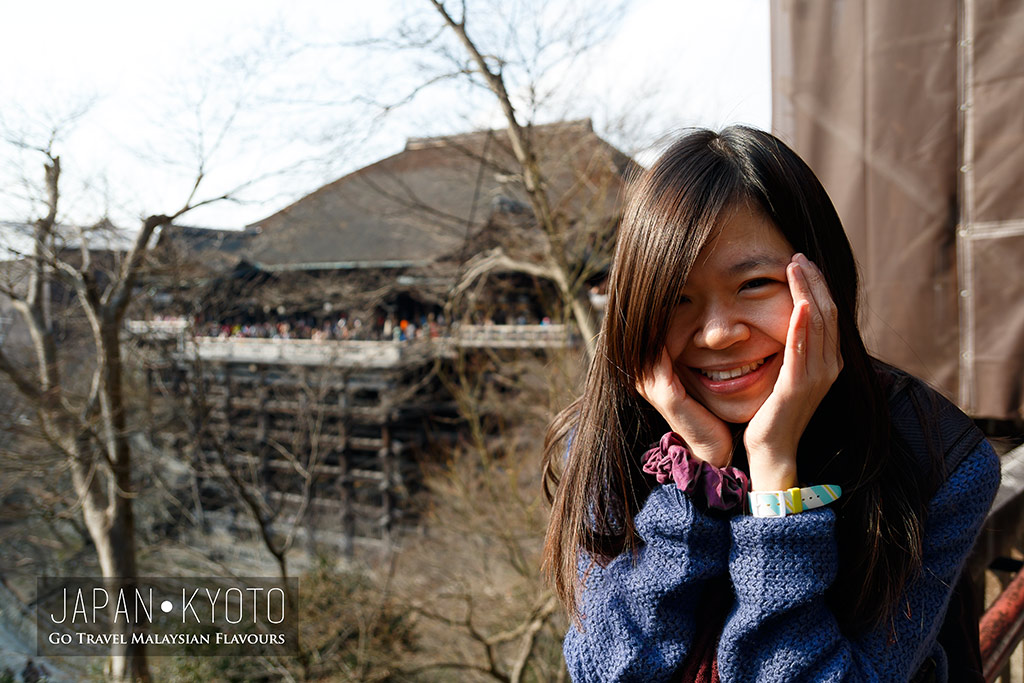
The stage may reminds many on a proverb “to jump off the stage of Kiyomizu”. Meaning, to make a firm decision and take a plunge, as if jumping off the stage which is built on the high, steep cliff.
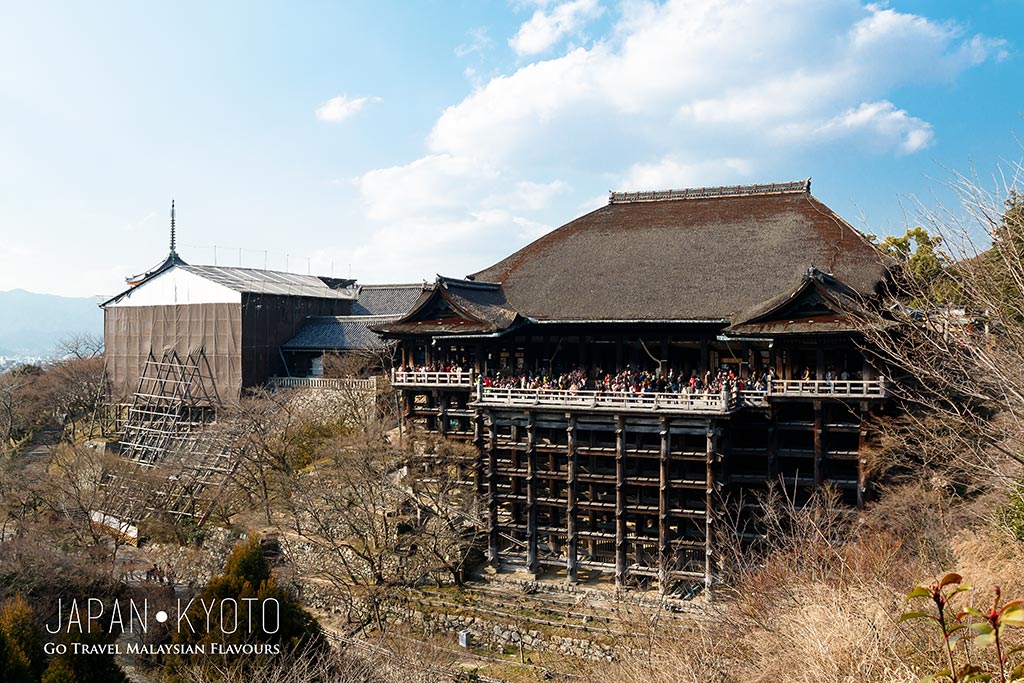
Main Hall (Hon Do)
The main hall, built over the slope without using a nail and still standing strong after hundreds years. *Bow to the hardwork of ancient construction*.
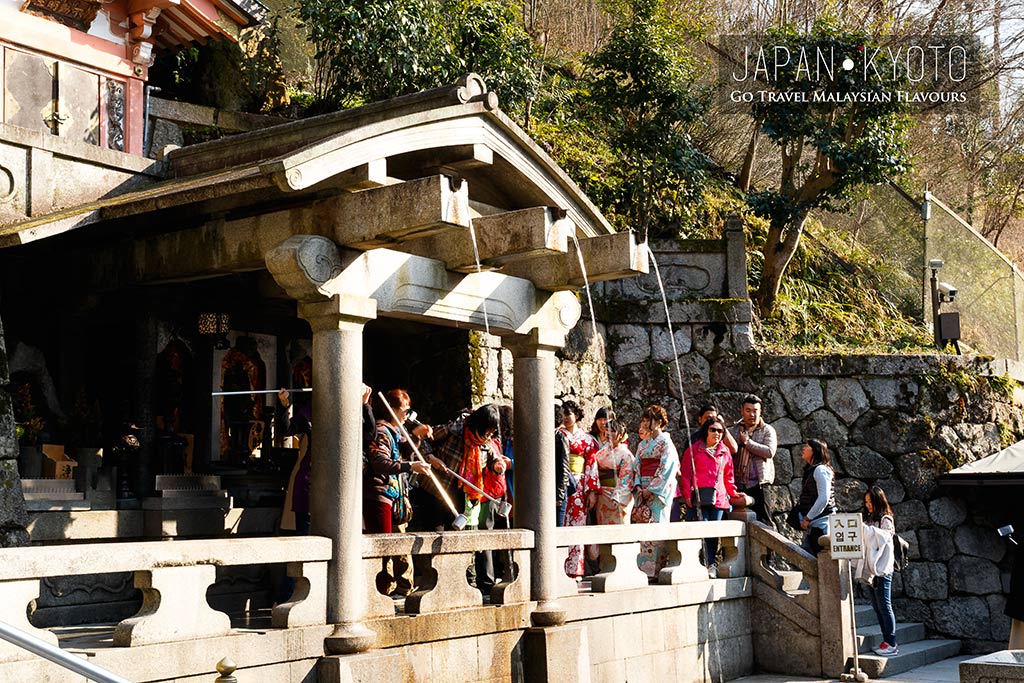
Otowa no taki (Otowa Waterfall) 音羽之滝
Before leaving, we passed by Otaowa Waterfall, which is below the main hall. The water gushing down from three channels, and have long been recognized as “Konjiki-sui” (golden water) or “Enmei-sui” (life-prolonging water). Visitors are seen making a beeline, catching each stream of pure water with ladles and pray for six senses purification while praying for wishes come true.
This is also how Kiyomizu-dera Temple gets her name, originates from Otowa Waterfall that has Kiyomizu represents “pureness of the waters” .
Otowa-san Kiyomizu-dera 音羽山清水寺
Address:
1 Kiyomizu,
Higashiyama-ku,
Kyoto-shi, Kyoto Japan.
Opening Hours: 6AM – 6PM ( closed at 6:30PM on weekends and holidays from mid April through July and everyday in August and September)
Tickt price: 300 yen
From Kiyomizu-dera temple to Gion:
Began feeling tired after coming down Kiyomizu-dera Temple, but still determined to complete the entire journey as planned. We walked back to the busy Ninenzaka and Sannenzaka streets to reach Nene No Michi (寧寧之道/ ねねの道), then Ishibei-koji Lane 石屏小路.
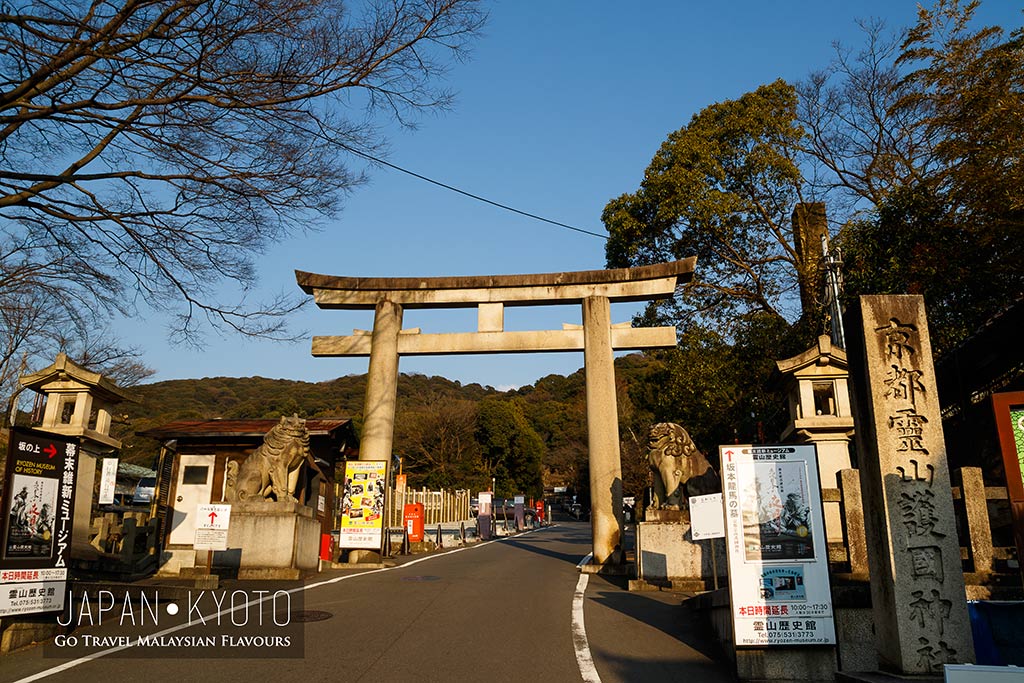
You will see Kodai-ji 高台寺 on your right. But we skipped because no more energy to “climb”.
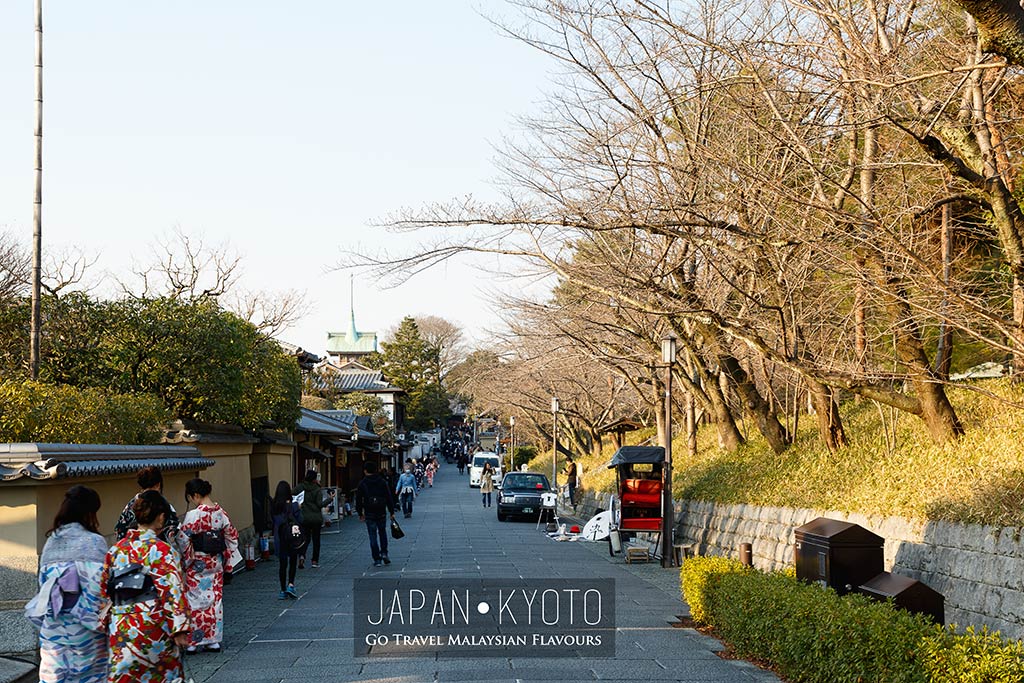
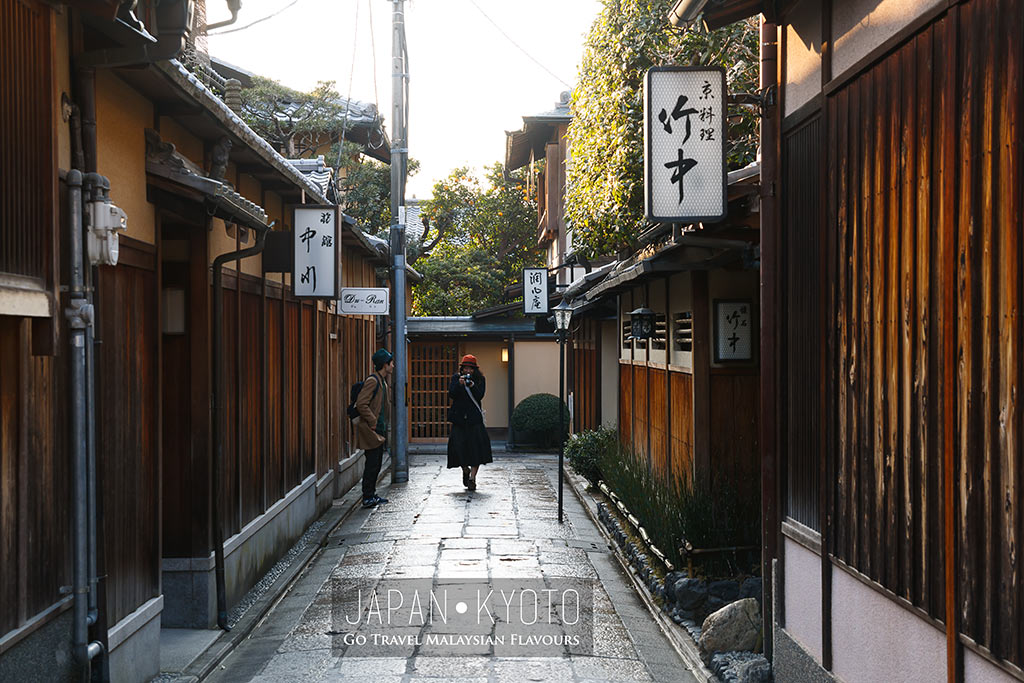
The journey became longer, people around getting lesser and lesser. Clearly, we lost our way when looking for Yakasa Shrine. Managed to be on the right track after wandering around the many traditional Japanese restaurants, ryokan, Kimono rental shop for half hour.
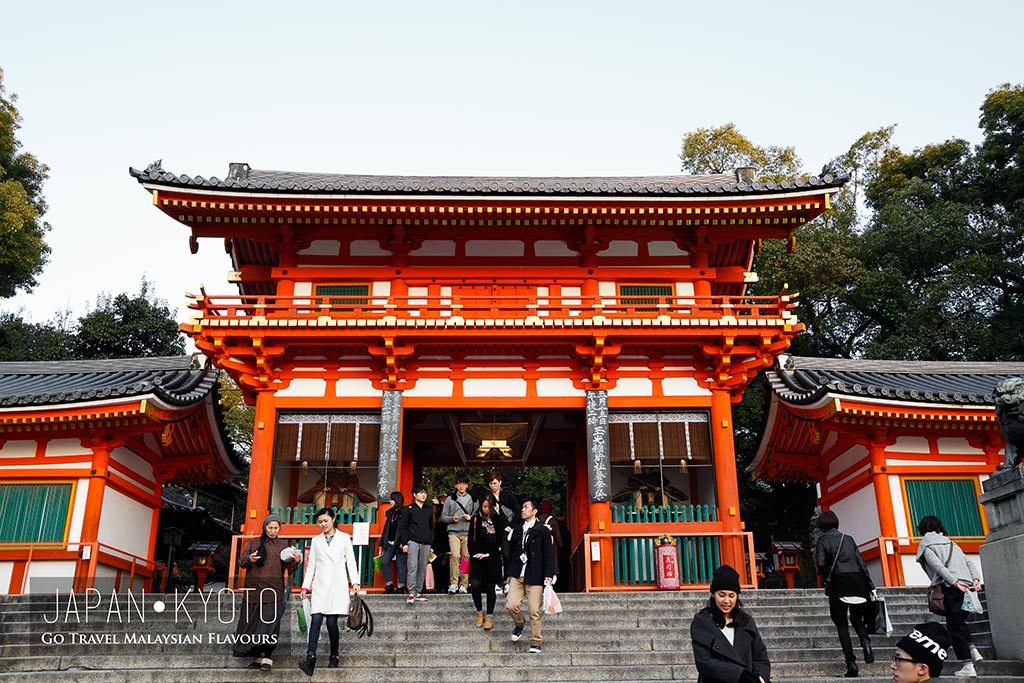
Yakasa Shrine 八坂神社
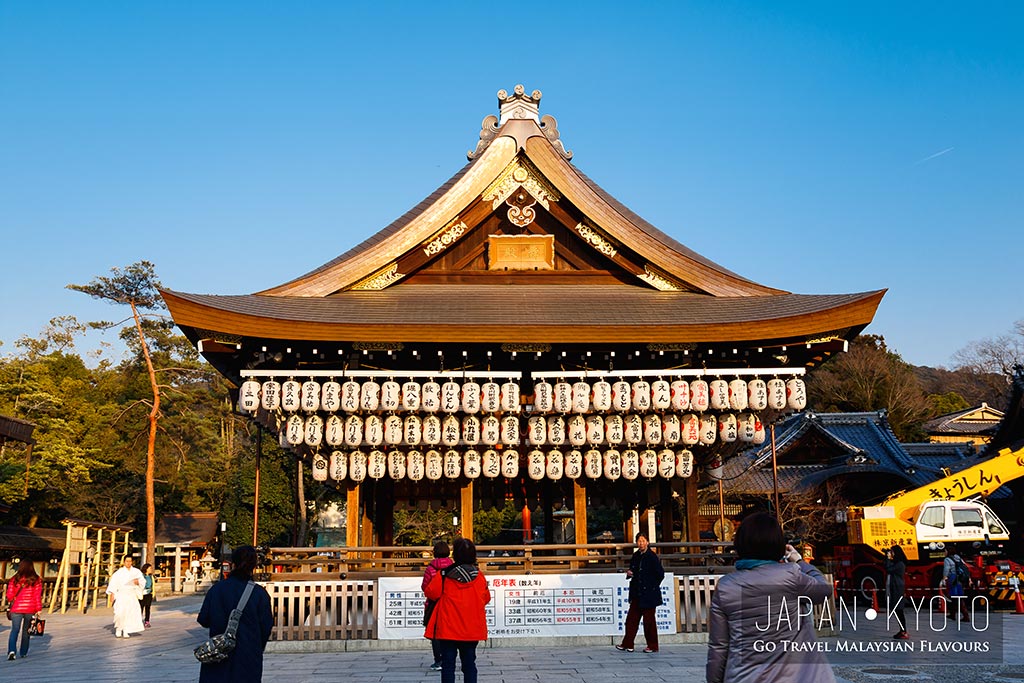
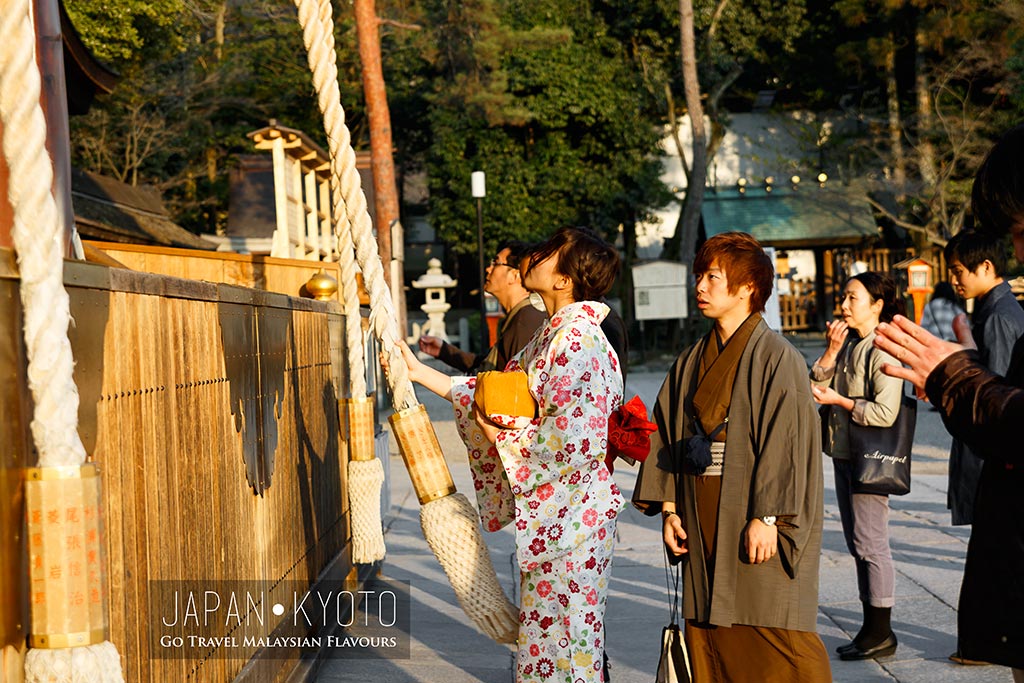
While people remember Kiyomizu-dera more when mentioning about temples in Kyoto, Yakasa Shrine, is not shadowed too. Yakasa Shrine is an important buillding in Gion district, famous for one of largest festivals in Japan – Gion Matsuri.
Yakasa Shrine 八坂神社
Address:
625 Gionmachi Kitagawa,
Higashiyama Ward, Kyoto,
Kyoto Prefecture 605-0073,Japan.
Opening Hours: 24 hours
Entrance fee: FREE
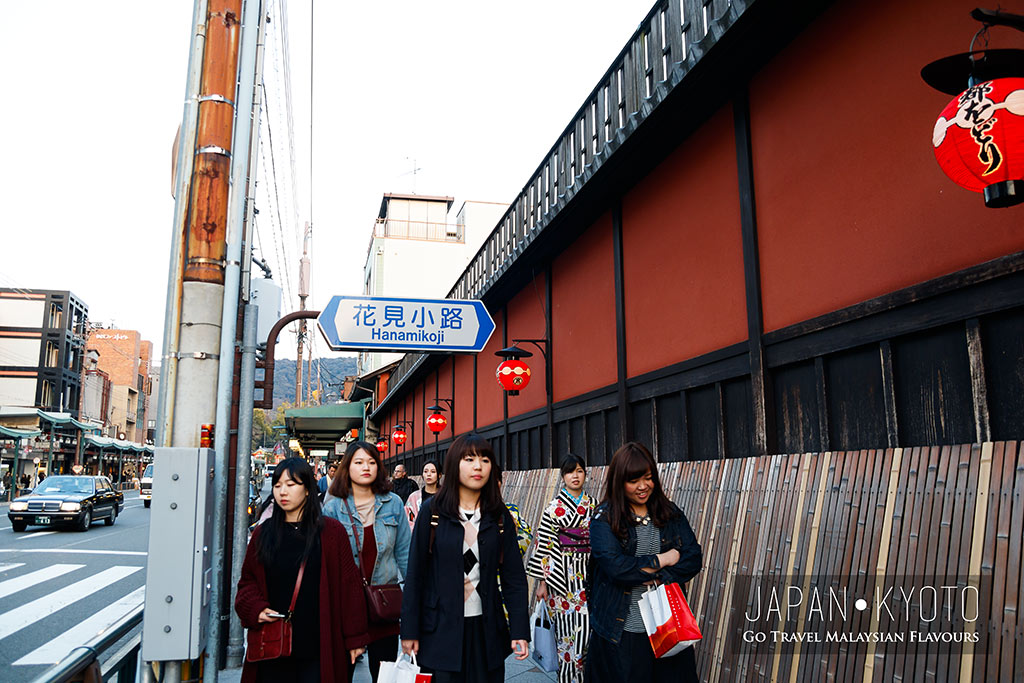
Gion Hanamikoji Street 祇園花見小路
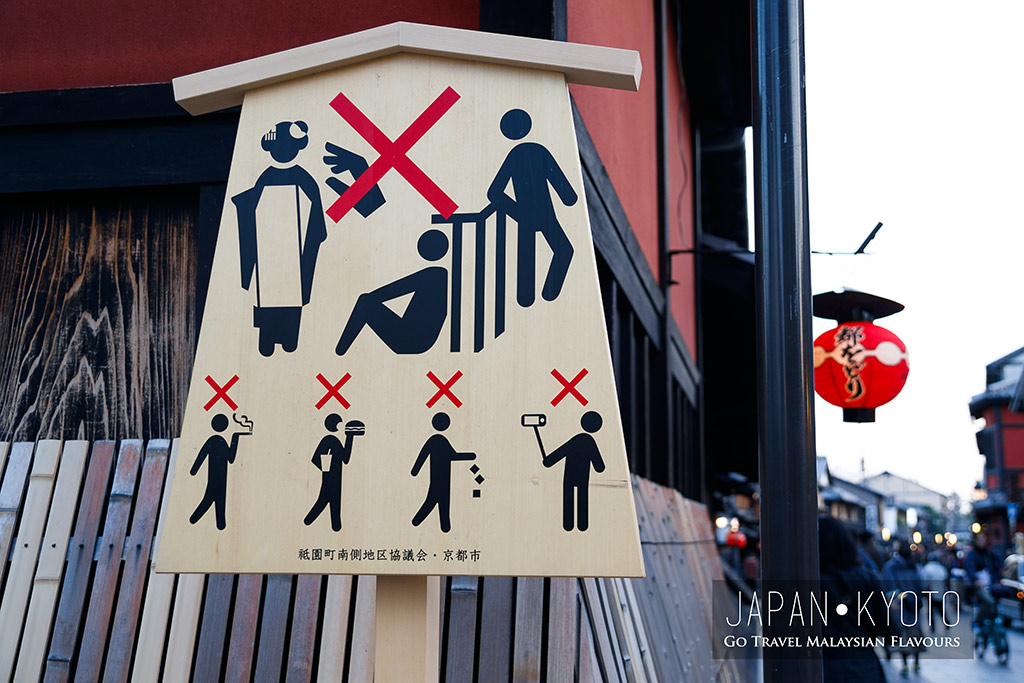
Stopped by at Gion Hannamikoji Street for like 10 minutes, hoping to see Geisha but at no luck. By the way, do respect them and follow the “do not do these to geisha” as highlighted.
Finally, called an end to our one day trip Higashiyama sightseeing route. Waited at the Gion bus stop near to LAWSON convenient store, just opposeite to Yakasa Shrine and went back to Kyoto Station for dinner.
Our 6 hours Kiyomizu-dera and surroundings road map guide:
京都駅 Kyoto Station -> Bus No. 206 -> Kiyomizu-michi bus stop 清水道バス -> 八坂通 Yakasa Dori -> % Arabica Coffee -> 金剛寺 Yakasa koshin-do -> 法観寺 (八坂の塔) Hokan-ji (Yasaka Pagoda) -> 二年坂 Ninenzaka ->三年坂 Sannenzaka -> 清水寺 (6AM-6PM) -> 三年坂 Sannenzaka -> 二年坂 Ninenzaka ->寧寧之道 -> 石屏小路Ishibe Path -> 高台寺 Kodaiji 、園山公園 -> 八坂神社 Yakasa Shrine -> 祇園花見小路 Gion Hanamikoji
Follow us on Instagram @malaysianflavours and Facebook Malaysian Flavours Snapchat Malaysian Flavours for more live updates!

